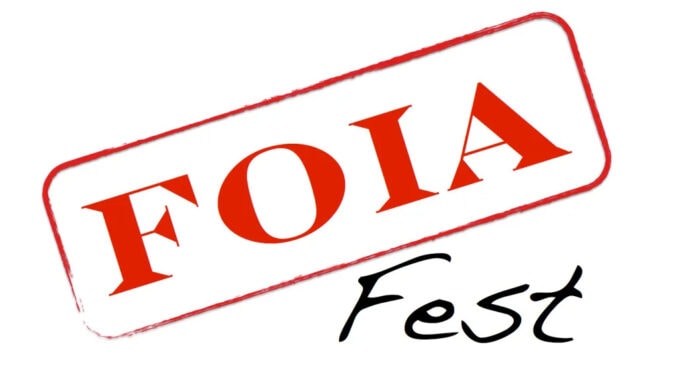
By Deanna Trejo
Piles of papers and megabytes of data may not make for an interesting visual, but FOIAs and the information they deliver can make for valuable broadcast news.
Four Chicago journalists from radio and TV answered questions Saturday afternoon during a panel discussion at FOIAFest 2021. Brandis Friedman, anchor and correspondent at WTTW, moderated the virtual event.
Here are some highlights of the Q&A session with Ben Bradley (investigative reporter at WGN), Samah Assad (investigative journalist at WBBM/CBS Chicago), Claudia Morell (city political reporter at WBEZ) and Ross Weidner (investigative producer at ABC7 Chicago).
Which comes first, the story idea or the FOIA? Reporters offered different answers to this question. For Bradley, FOIA requests are “just one thing that you hang a bigger story on.” Assad sometimes “may truly just go fishing” by filing FOIA requests around specific areas of interest, such as systemic police issues and sexual assault data.
Sources help ABC7’s Weinder target his FOIA requests to specifics, such as data ranges, for a higher likelihood of getting meaningful information. WBEZ’s Morell files routine FOIA requests quarterly, which helps her through a lull, and she also files FOIAs when looking for specifics based on tips from sources. Filing the same FOIA requests regularly helps keep a dataset timely so that it’s ready when needed.
Visualizing data creatively is also important in broadcast news. Stacks of FOIA requests that were filed to uncover wasteful spending at City Hall may not dazzle, but one of the $400 chairs rolling outside of City Hall just might.
When it comes to creativity, use the strengths of the Web and broadcast to their fullest extent when reporting data-driven stories. Assad noted that making a story look good online is important because “that’s where a story lives forever.” And audiences aren’t necessarily the same on radio or TV as on the website, so collaboration is key to telling effective stories in both places.
Working remotely also pushes journalists into more collaboration and communication, including how they share FOIA tasks and information. Maintaining databases and divvying up large datasets for cleaning were two suggestions made by the panelists. Another was to file FOIA requests instead of scouring Twitter or other social media to source information.

